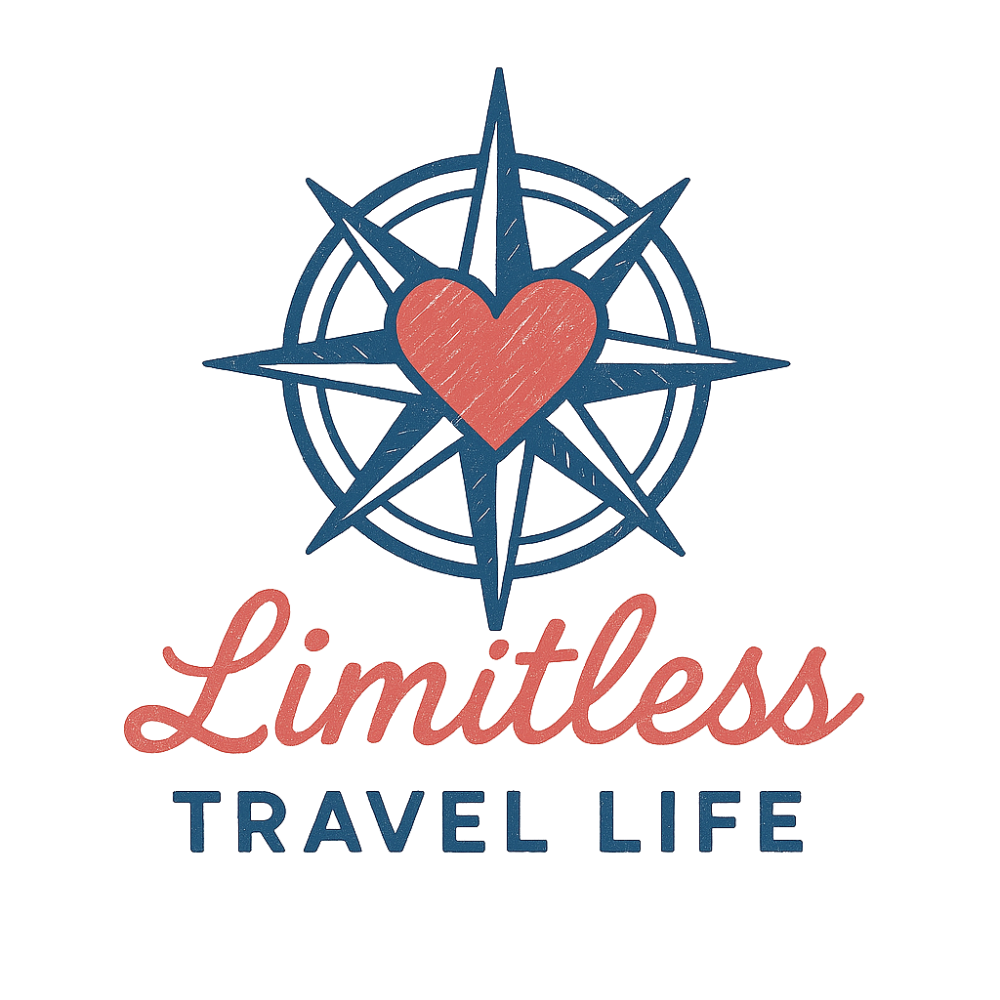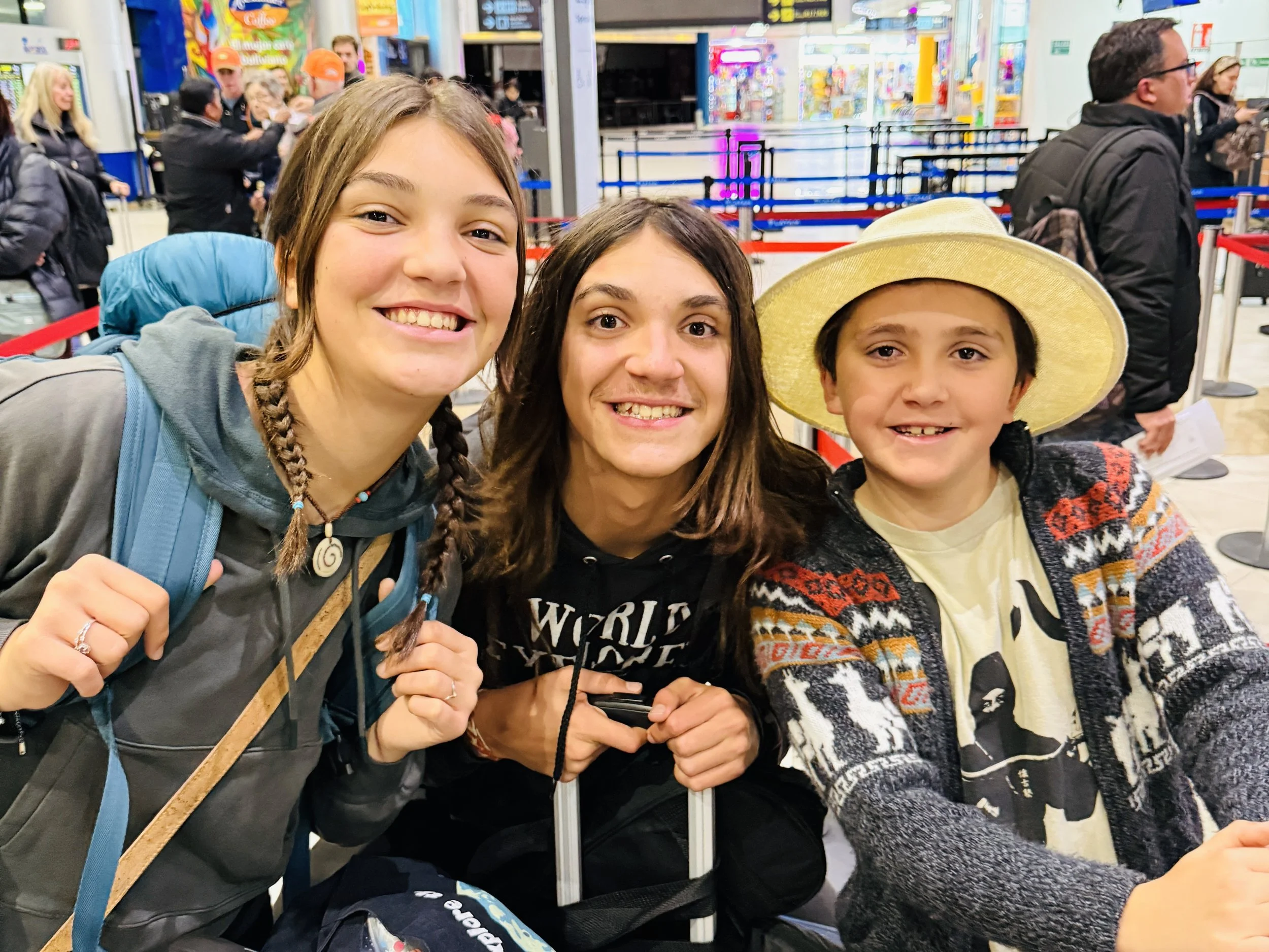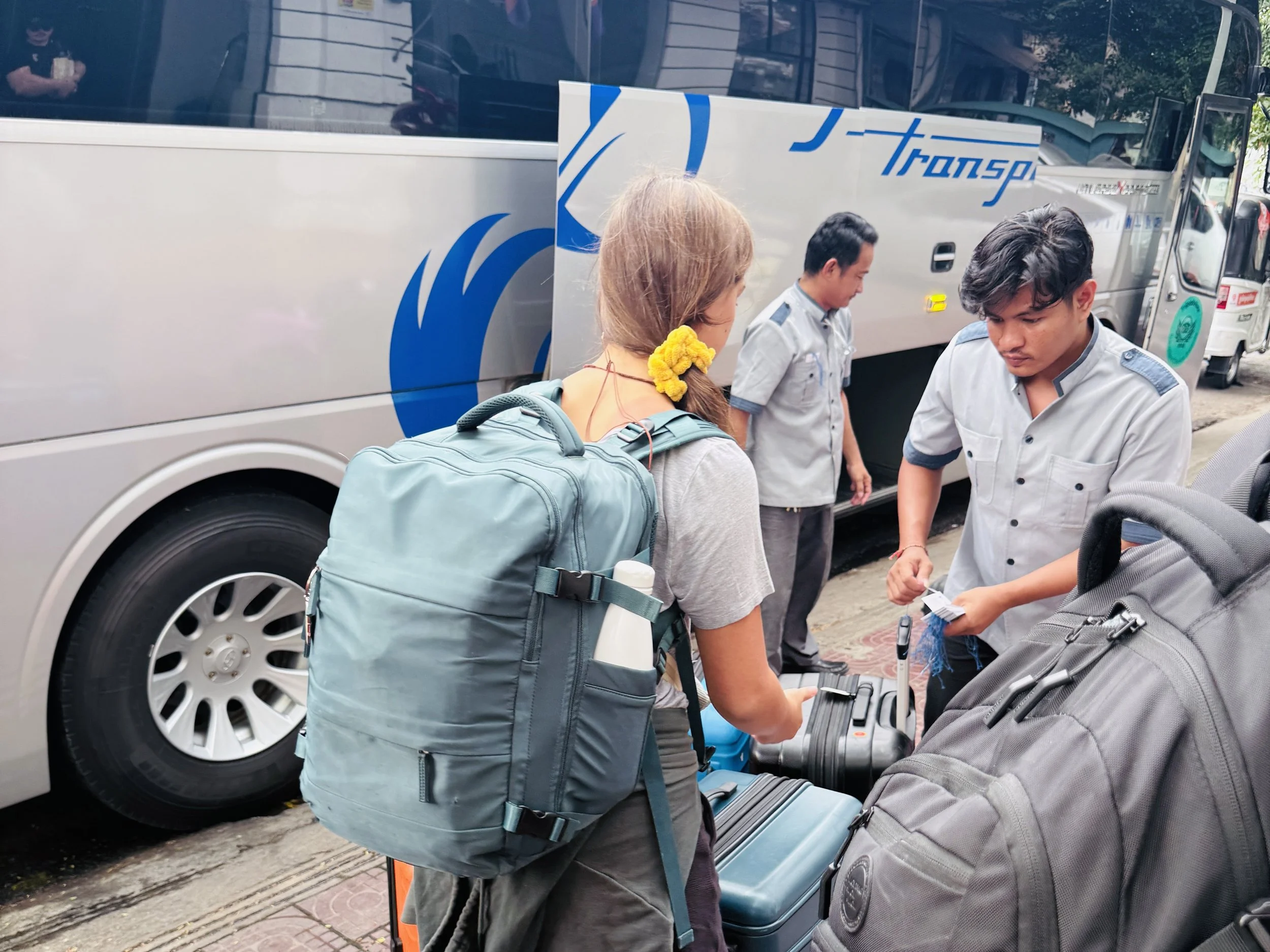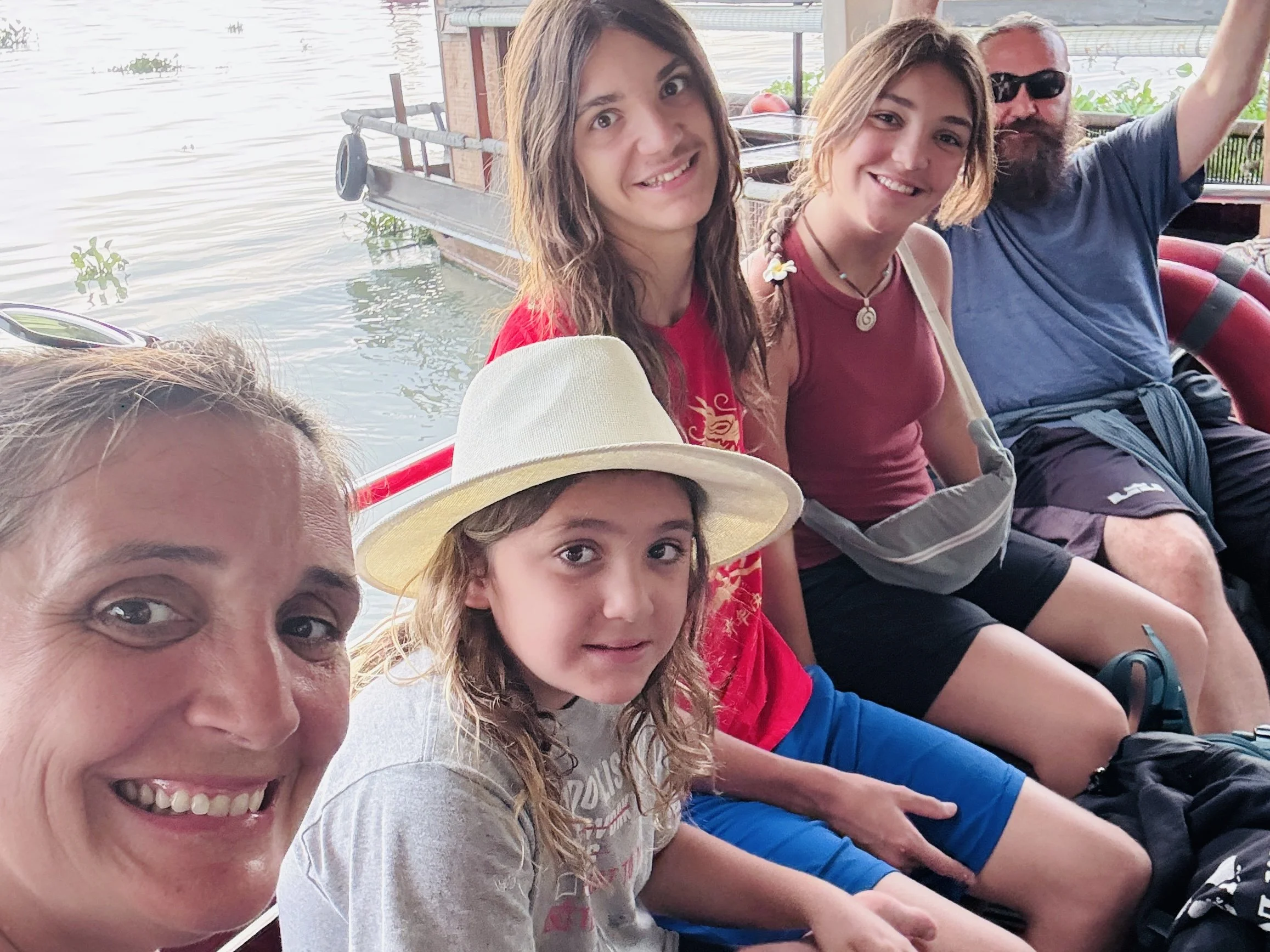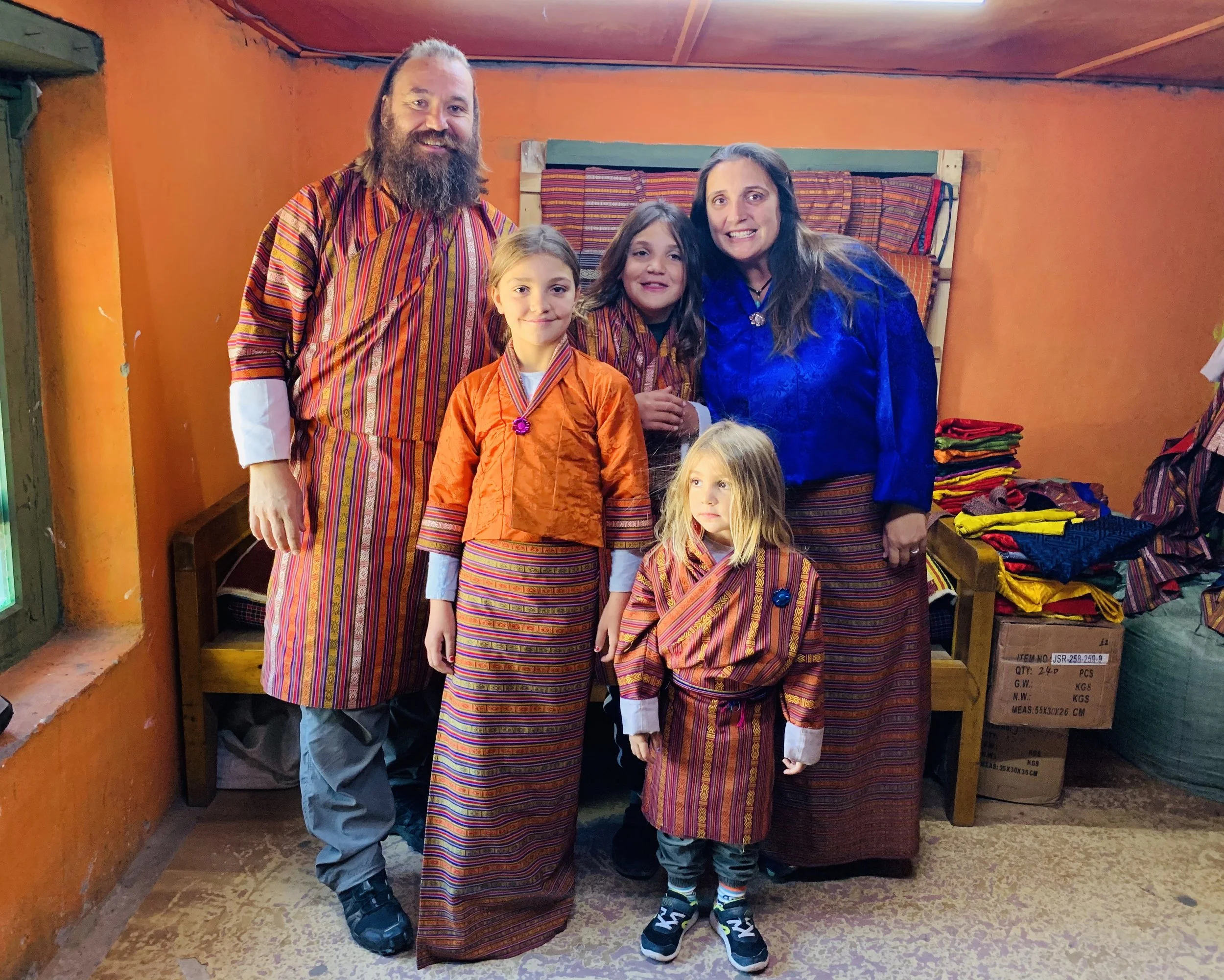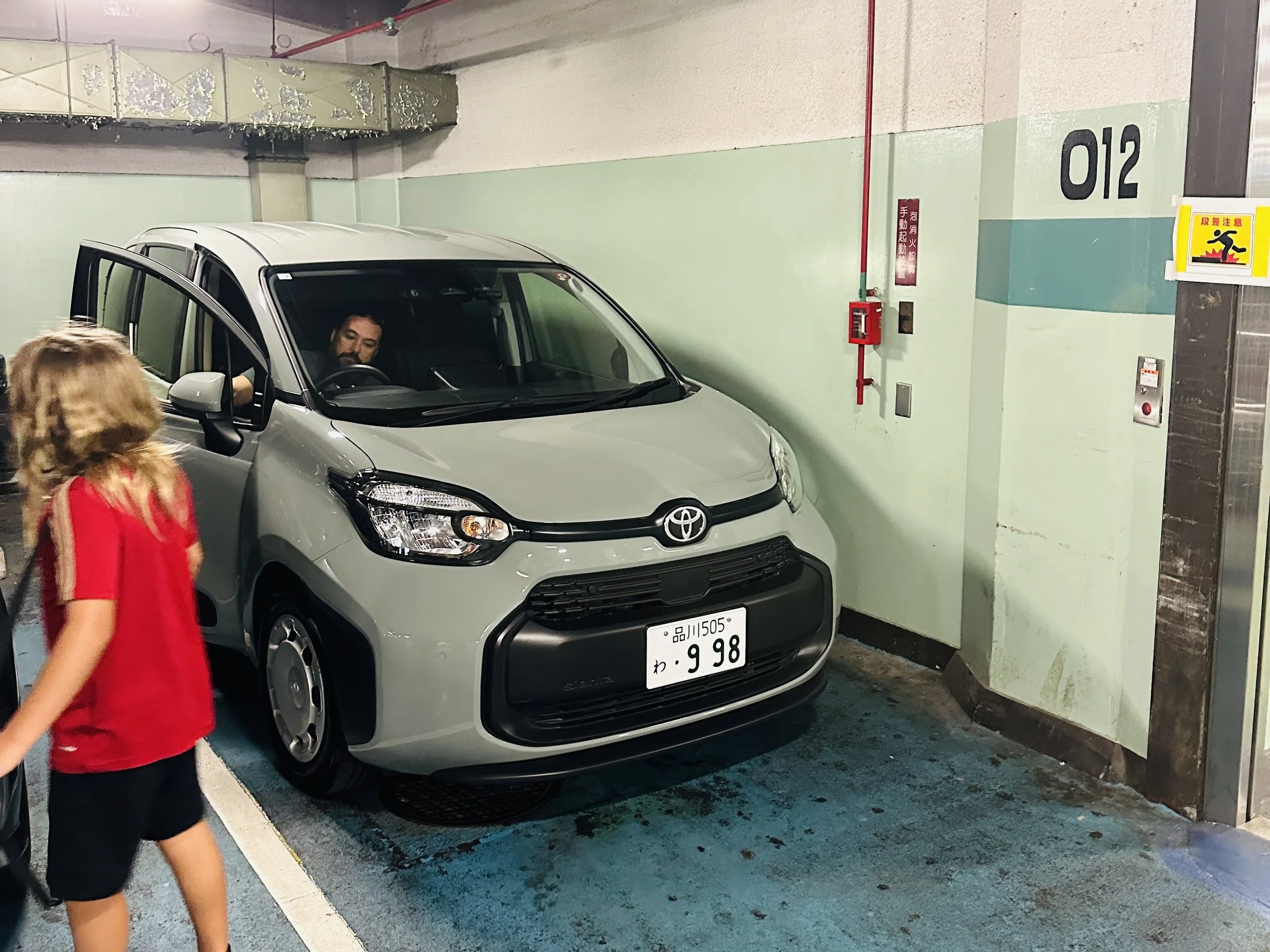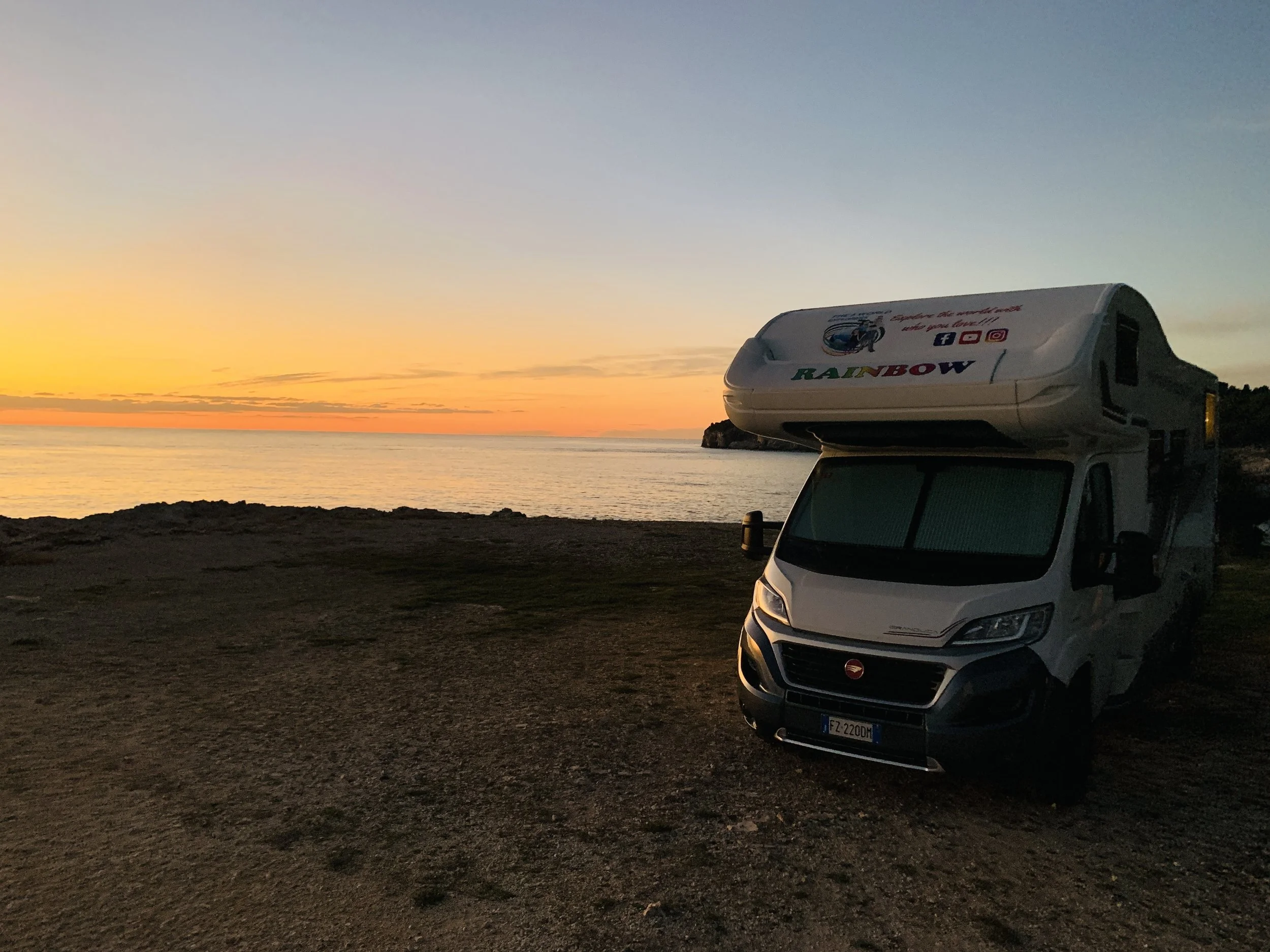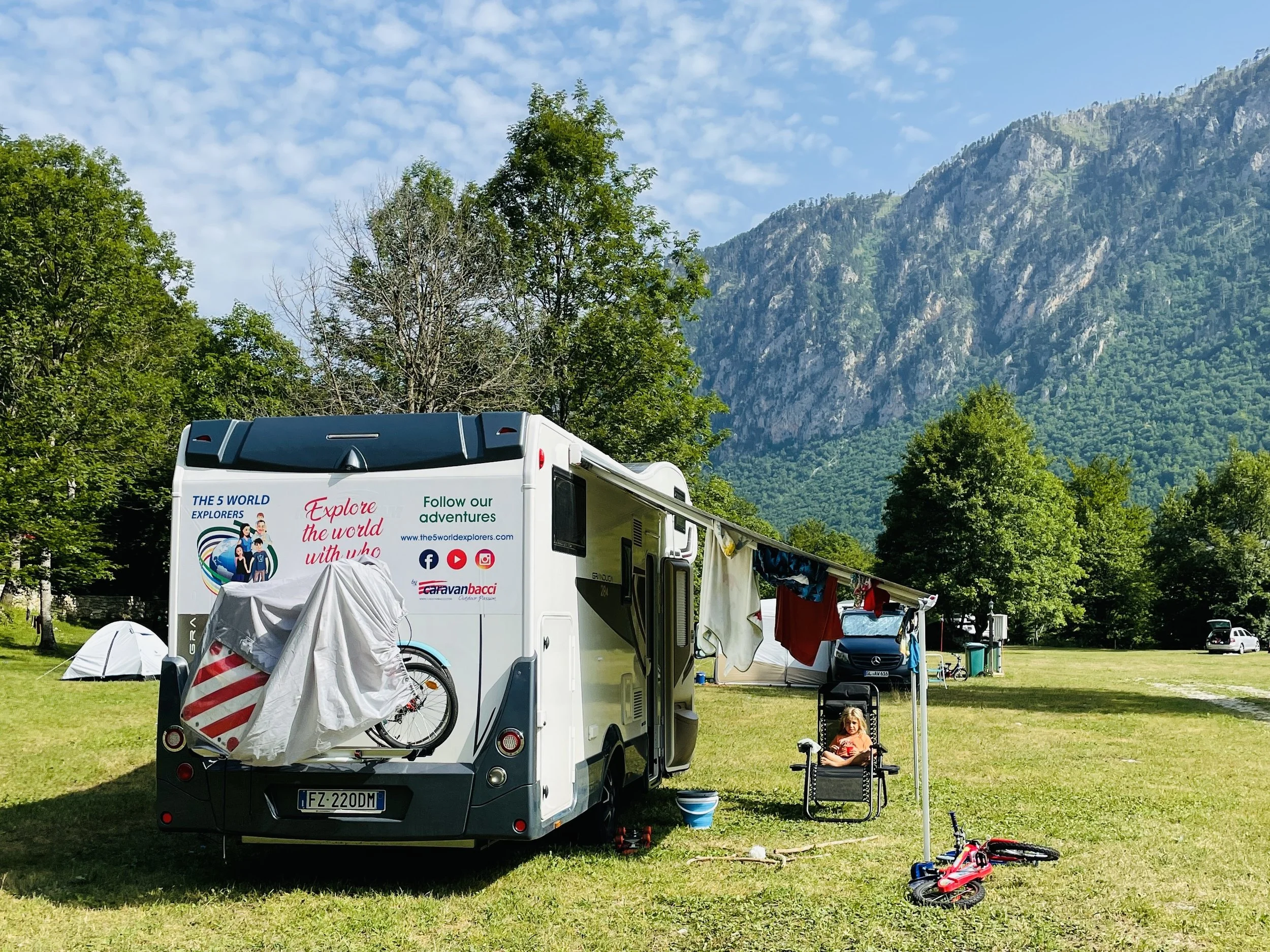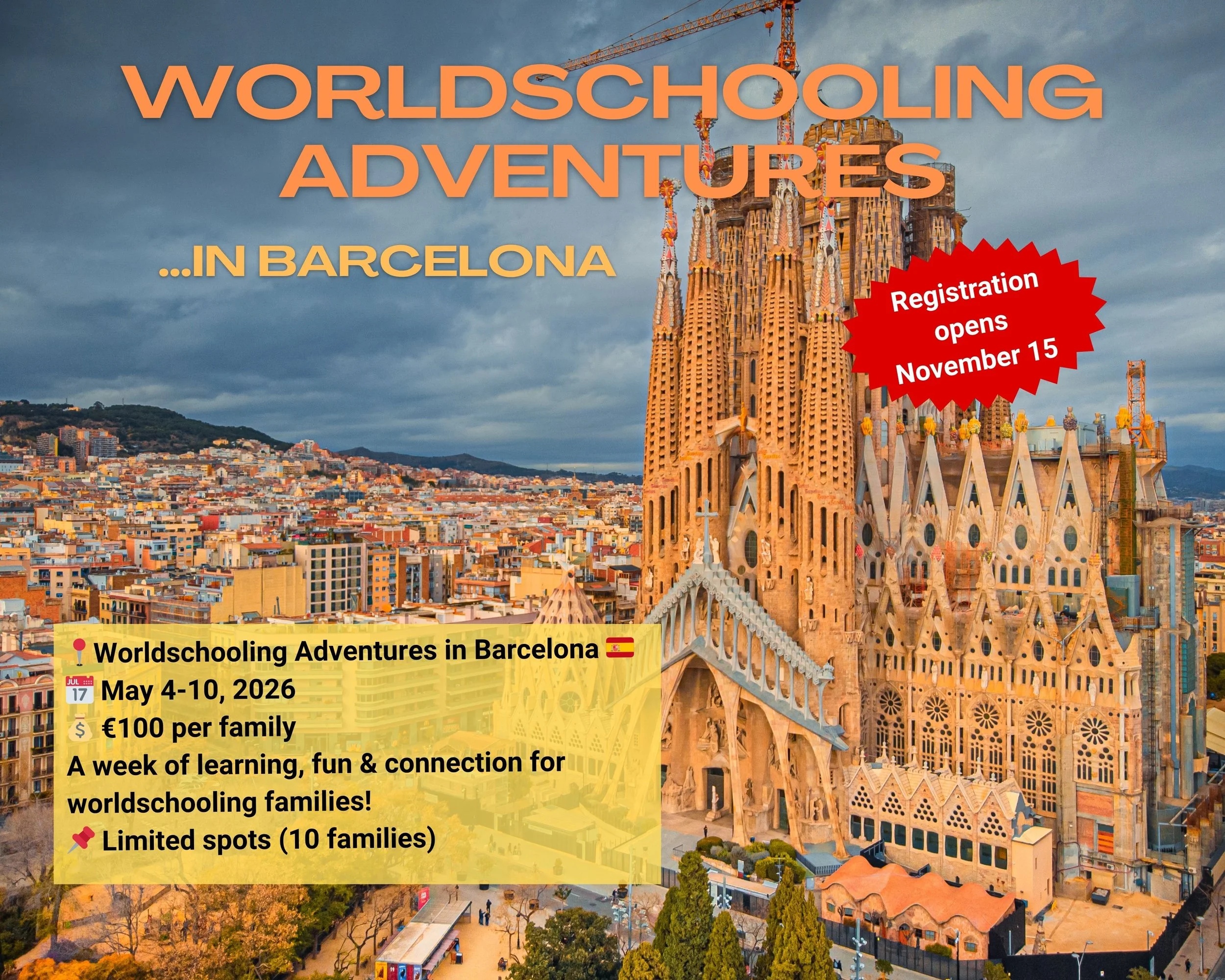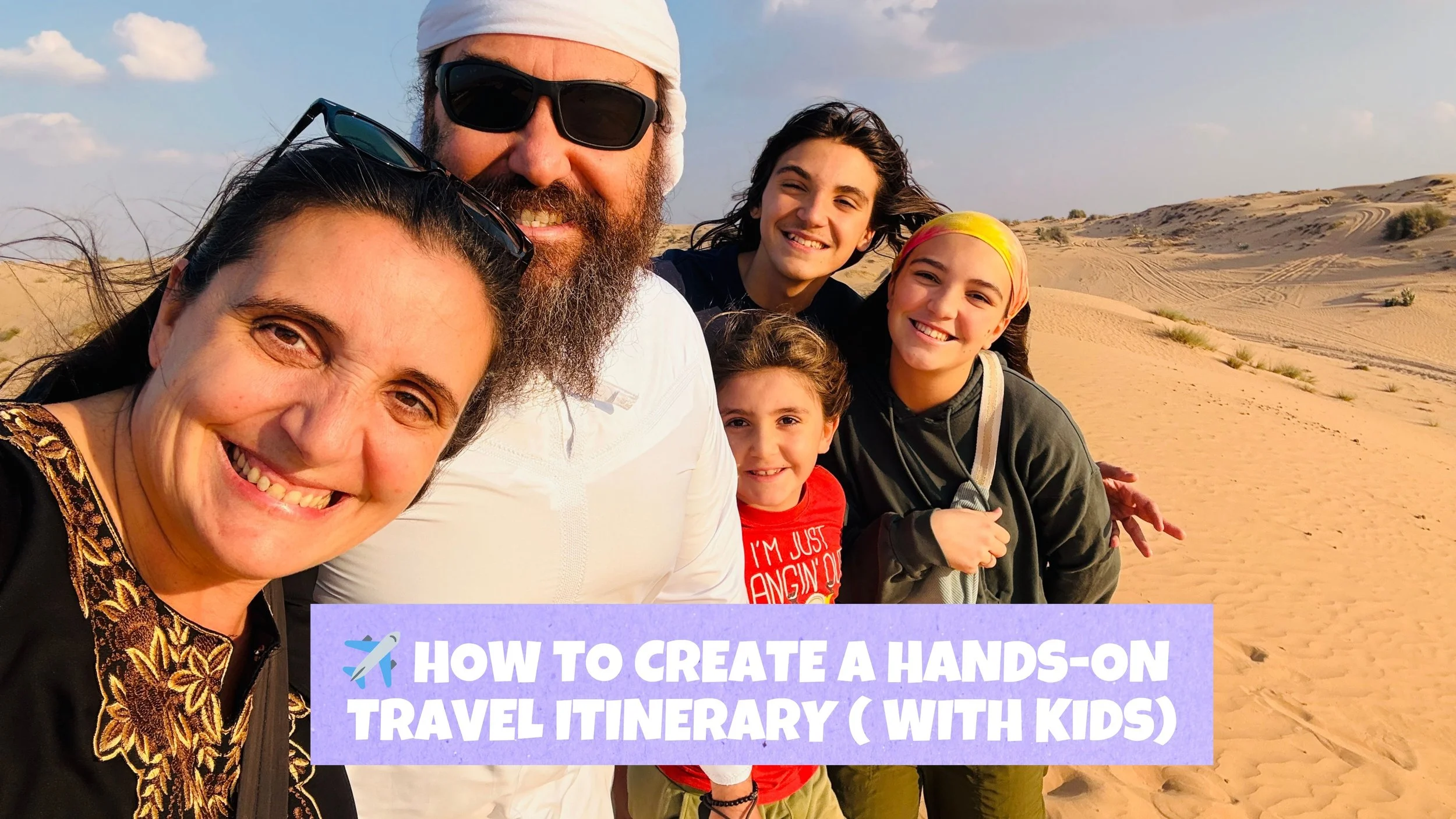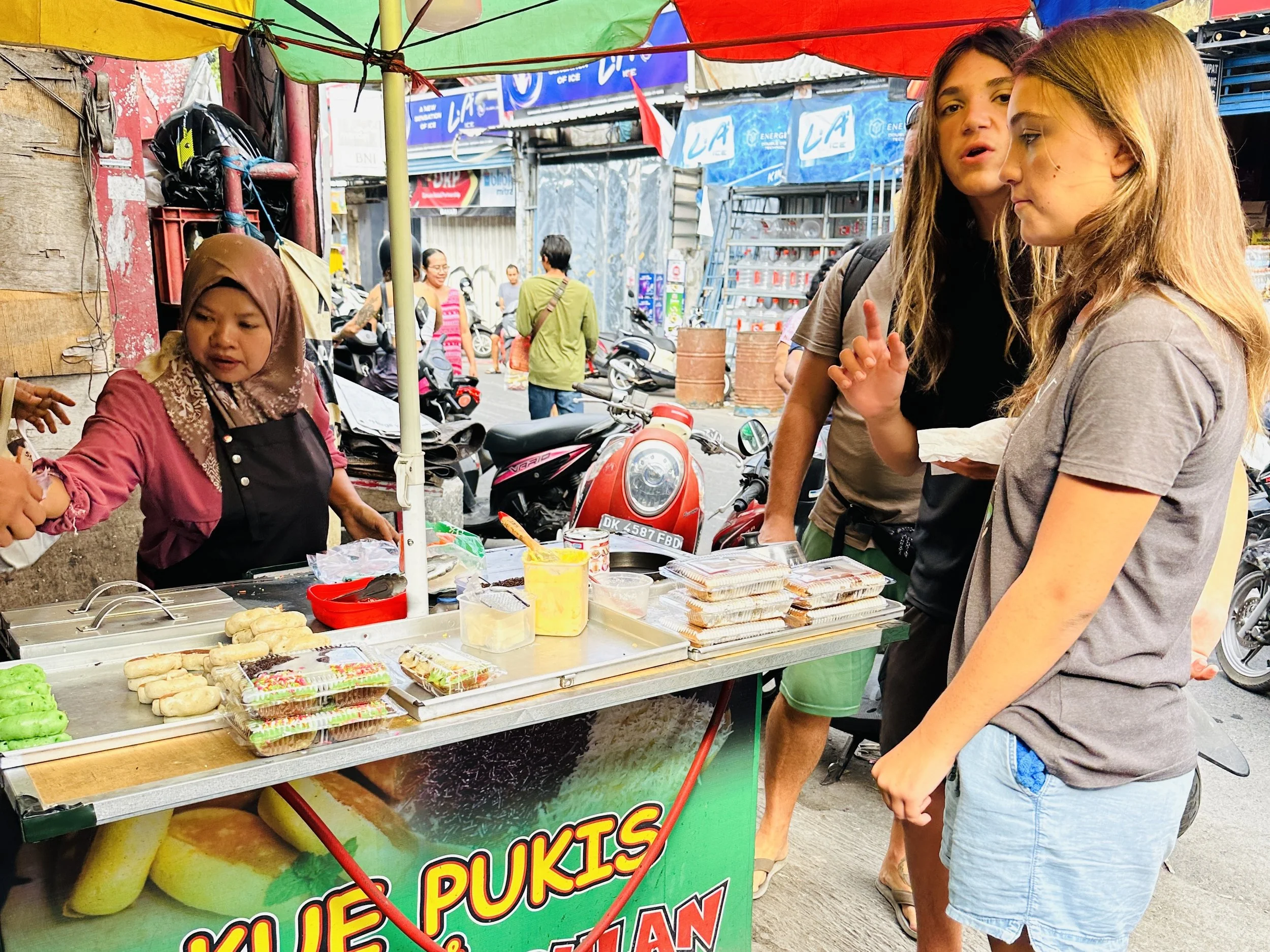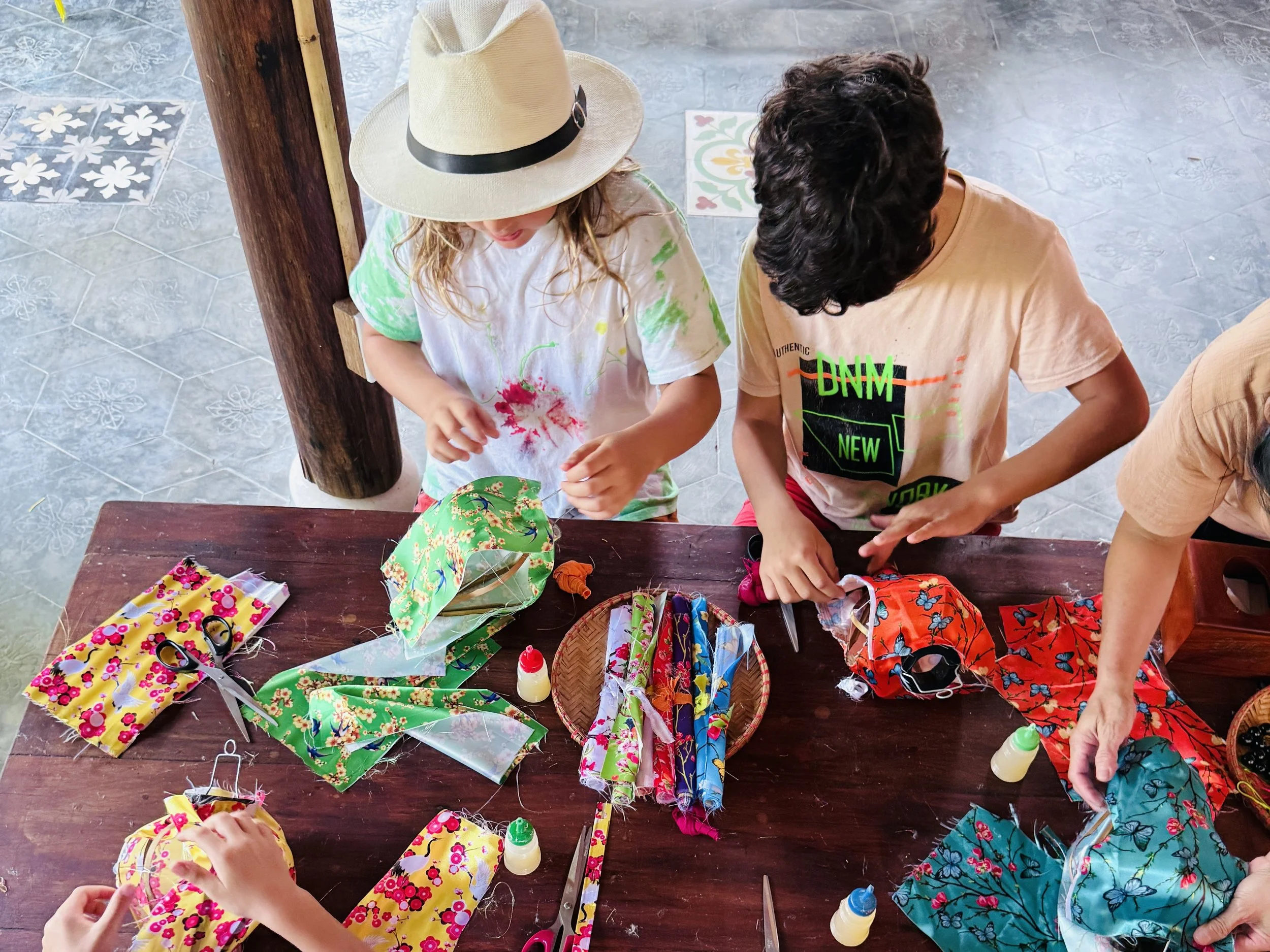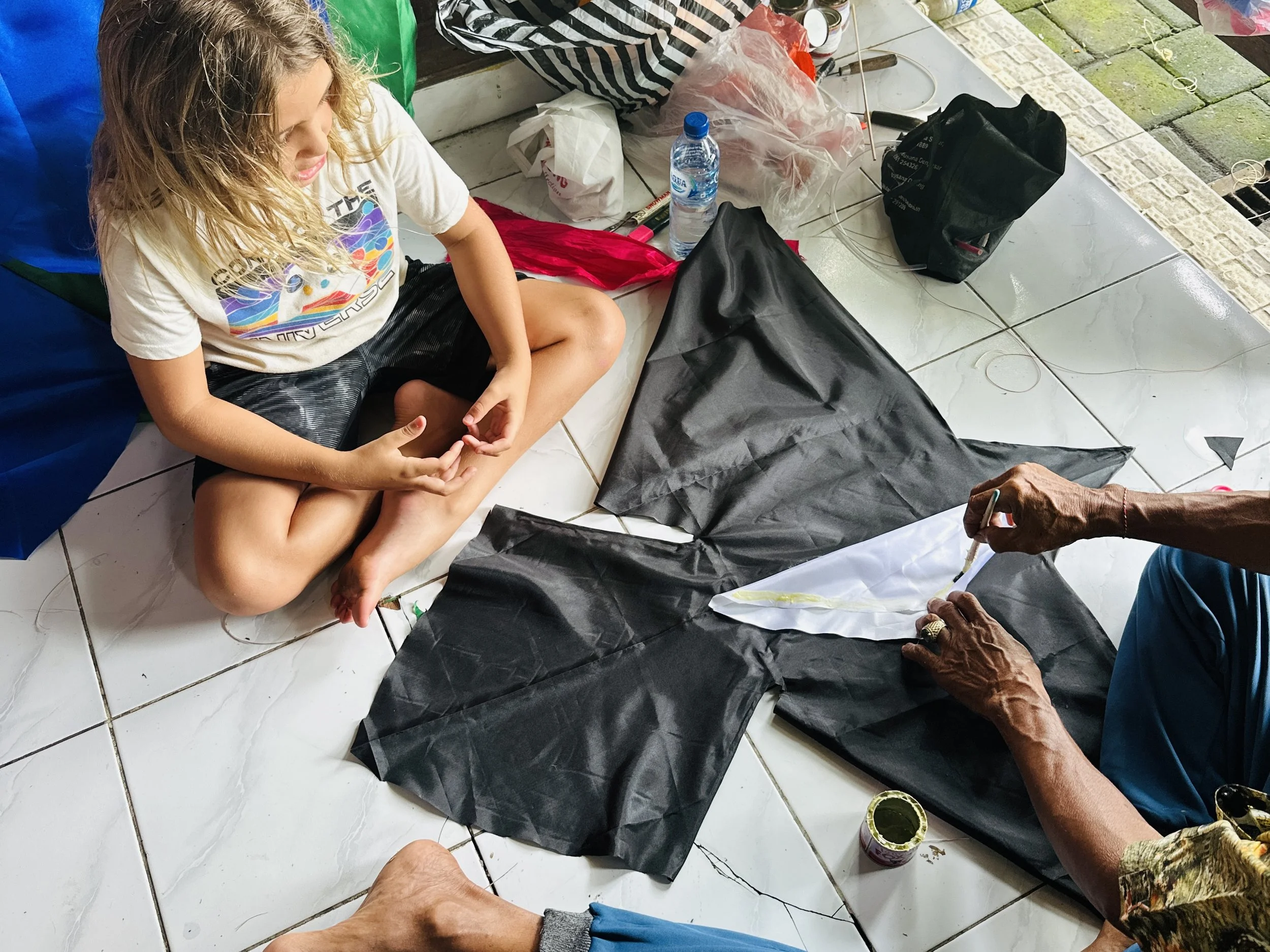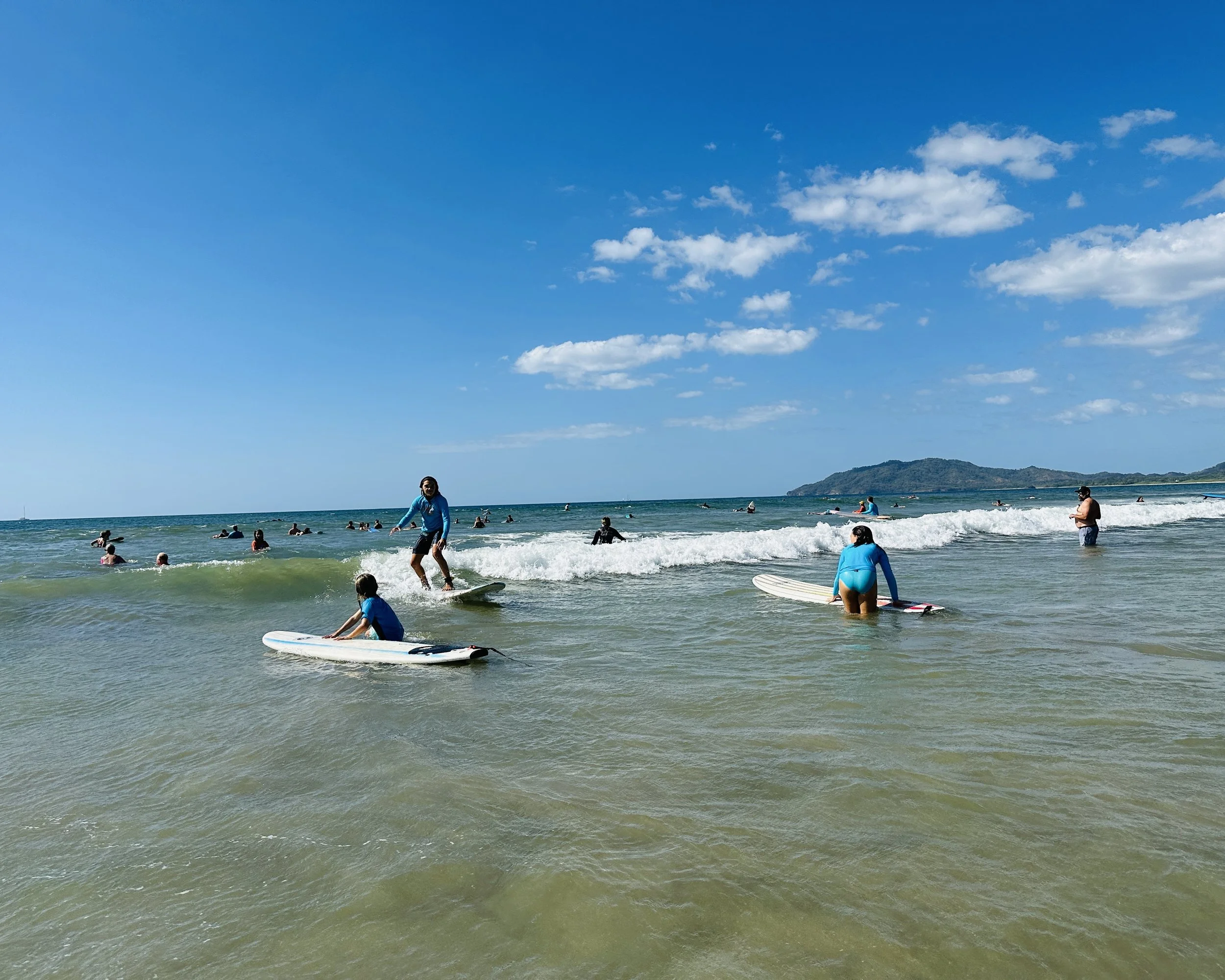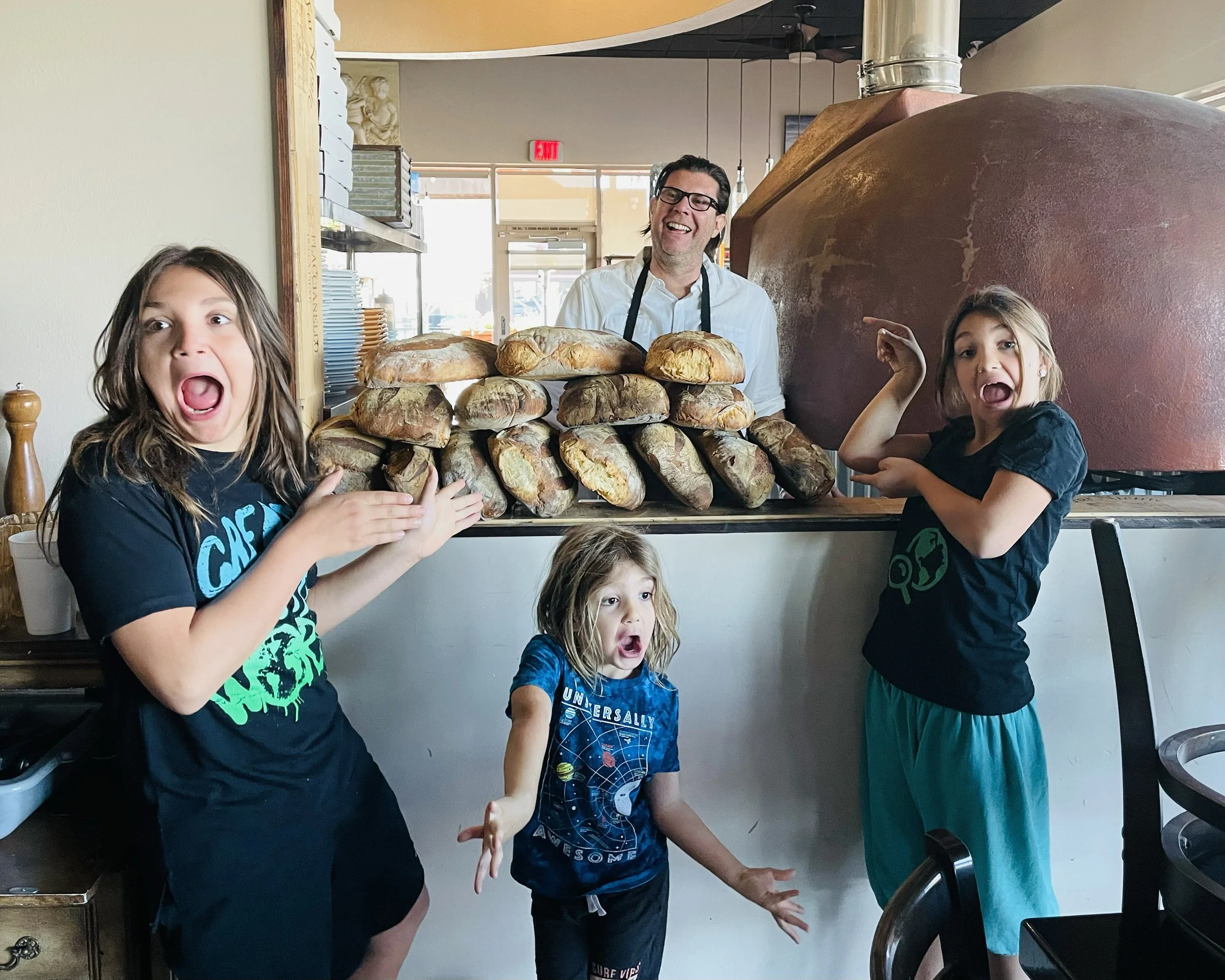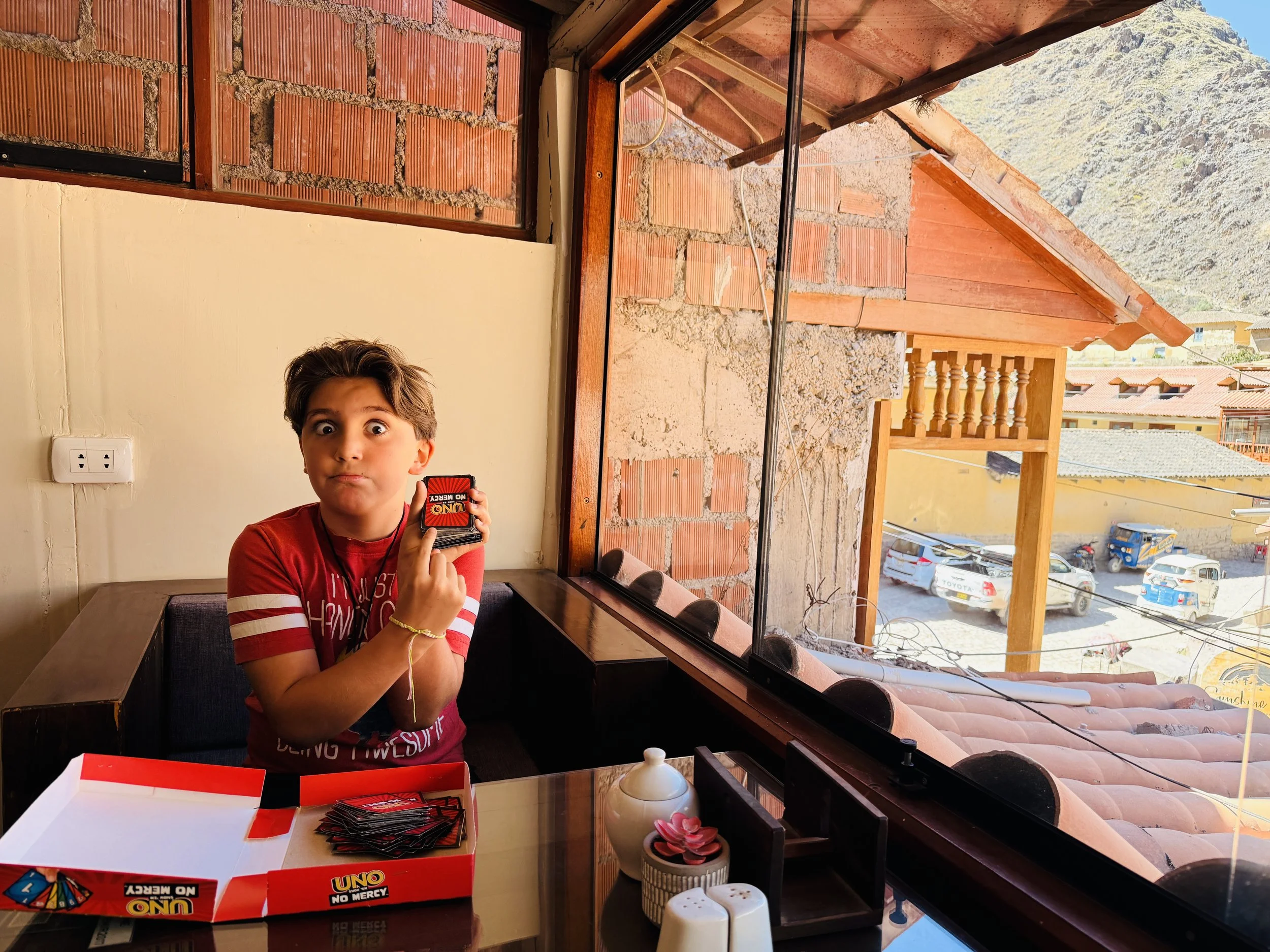Different Ways to Travel as a Family: How to Choose What Fits Your Journey
There’s no single right way to travel as a family. Over the years, we’ve explored the world through slow travel, road trips, public transport, tours, and everything in between. In this post, we break down the different travel styles families can choose from — and how to find the one that fits your journey.
Traveling as a family is one of the most transformative gifts we can give our kids and ourselves. But here’s something we’ve realized after more than seven years of traveling full-time:
There is no single “right” way to travel.
And honestly? That’s the beauty of it.
Throughout our journey, our travel style has evolved over and over again. Some seasons of life pushed us toward slow travel, while others were made for road trips, fast-paced adventures, or joining organized groups. Sometimes we wanted routine and stability. Other times, we craved movement, spontaneity, and a bit of chaos (in the best way).
The truth is…
👉 Families travel differently.
👉 Families change over time.
👉 And your ideal travel style may shift from trip to trip, and that’s perfectly okay.
In this blog post, we’re sharing a complete, honest overview of the different ways families can travel, what each one offers, what to expect, and how to choose (or combine!) the styles that fit your family best.
We’re not here to convince you that one way is “better.” We’re here to open the door to possibilities so you can travel with more confidence, ease, and joy, whether you’re planning one trip a year or building a lifestyle around exploration.
Let’s dive in. 🌏💛
1. Slow Travel
Stay longer. Settle in. Let life unfold.
Slow travel has become the backbone of our family’s full-time journey. To us, it means staying in one place long enough to understand its rhythm, not just its landmarks.
For our family, slow travel looks like:
Renting a small house or apartment for a few weeks or more.
Finding a favorite café.
Getting to know the local fruit seller.
Joining weekly classes or workshops.
Cooking meals at home.
Letting the kids create their own routines.
Slow travel works beautifully if you:
✔️ Work remotely
✔️ Worldschool or homeschool
✔️ Get overwhelmed by fast-paced itineraries
✔️ Want depth over quantity
What we love about slow travel:
Kids feel grounded and settled.
We make real connections with locals.
We spend less by avoiding constant transportation.
We learn more naturally through everyday experiences.
The downside?
You may see fewer places, but the places you do see become part of your story.
We value these seasons of slow travel because they give us the rare chance to simply be. They also balance out the periods when we need to move quickly due to short visas, logistics, or costs. When we slow down, we truly enjoy living like locals.
Often, we arrive with big plans because “we have the time”… and then we end up doing very little, simply because we’re content just being there.
And that’s the magic of slow travel: life doesn’t rush past you.
It unfolds gently, one meaningful moment at a time.
During our time in Hoi An, Vietnam, for example, we had a long list of things we wanted to see. And while we eventually did some of them, most of our days were spent biking everywhere, visiting the market to buy fresh vegetables from our favorite lady, and watching the sunset from our kitchen while preparing home-cooked meals. Those simple moments became our favorite memories of the entire stay.
2. Fast Travel / Multi-Stop Trips
The classic “vacation” travel style has its own magic.
Fast travel means visiting multiple destinations within a short period of time. Think:
10 days in Italy, exploring four cities.
2 weeks in Southeast Asia, hopping between countries.
A one-month whirlwind around Europe.
Families love this style because it packs a lot of variety into a short window, perfect for bucket-list trips or limited time off work.
We’ve done fast travel many times, especially in places where everything feels new and exciting (Japan, Morocco, India, Australia).
Why fast travel works:
✔️ You maximize experiences
✔️ You see a lot in a short time
✔️ It’s thrilling, stimulating, and full of energy
Challenges to expect:
Kids get tired more quickly.
Constant packing and unpacking can be draining.
Everyone needs downtime afterward.
We do a fair amount of fast traveling ourselves. Most recently, during our trip to Bolivia, we spent three intense days exploring the Salar de Uyuni, also known as the Salt Flats. We took an overnight bus from La Paz, arrived in Uyuni eight hours later, jumped straight into our private tour, and spent three unforgettable days visiting some of the most surreal landscapes we’ve ever seen.
It was exhausting and breathtaking all at once, absolutely worth it. But we also planned slow days before and after that side trip to balance out the intensity.
Our advice?
Build in a rest day every 3–4 days where you do nothing:
No tours, no rushing, no sightseeing. Just be.
It makes the entire trip smoother, happier, and far more enjoyable for everyone.
3. Public Transportation Adventures
Buses, trains, ferries, and the stories that come with them.
Public transportation is one of our favorite ways to immerse ourselves in local life. It’s affordable, eye-opening, and often surprisingly fun, especially with kids.
We’ve taken:
Night trains across Asia
Long-distance buses in Peru and Turkey
Tuk-tuks in Thailand and Vietnam
Ferries in Greece
Motorcycle taxis in the Philippines (yes, with all five of us!)
Why families love this style:
✔️ It’s budget-friendly
✔️ Kids find it adventurous
✔️ It’s fantastic for learning geography and culture
✔️ You’re surrounded by real, everyday life
But of course, there are limitations:
Unpredictable schedules
Long travel times
Difficult with lots of luggage
Less flexibility
We use public transportation most when we're:
Exploring cities
Traveling through countries with strong bus or train systems
Trying to keep our trip more eco-friendly
Lately, we’ve really enjoyed crossing borders over land rather than flying. For example, when we traveled from Vietnam to Cambodia, we took a ferry that stopped at the border, handled all the visa procedures for us, and then continued to Phnom Penh. From there, we rode tuk-tuks around the city and later took a public bus to Siem Reap.
We absolutely loved traveling this way; it was inexpensive, adventurous, and allowed us to interact with locals much more naturally. It also supports local businesses and gives you a deeper, more authentic glimpse into the true rhythm of daily life.
Public transportation may not be the most convenient option, but the memories, stories, and human connections it creates make it one of the most enriching ways to travel.
4. Guided Tours & Day Trips
Perfect when you want to learn, not plan.
There are destinations where guided tours truly enhance the experience. Think of…
Complex historical sites
Nature reserves
Cultural workshops
Regions where logistics are complicated
Countries where safety or language is a factor
We’ve joined tours in Bhutan, Bolivia, Mongolia, Tanzania, and India, and each one has taught us something we would never have discovered on our own.
What we look for in a good tour:
✔️ Small group or private options
✔️ Kid-friendly pacing
✔️ Guides who are passionate storytellers
✔️ Hands-on, immersive elements
When done well, tours bring depth, insight, and ease to your travels, especially when your brain needs a break from planning every detail yourself.
Over the years, we’ve taken many tours during our full-time travels. Some have been group tours, but for the most part, we prefer private ones, as we’re a family of five, which makes logistics much smoother.
In some destinations, tours are not just helpful, they’re required.
For example, you cannot visit Bhutan without being on an organized tour.
In other places, such as India, tours simplify life tremendously and help you gain a deeper understanding of the culture. In countries like Tanzania, joining a guided safari allows you to experience wildlife safely while learning from experienced experts.
For shorter, one-day tours, we may choose a group option if it’s more cost-effective for our family. One of our go-to companies to search for day tours is Viator loads of options at different prices. But for longer experiences, private tours tend to work best for us.
What we love most is how much insight a knowledgeable local guide can provide. A single conversation can open your eyes to traditions, history, and everyday life in ways you might never uncover on your own.
Sometimes, a tour isn’t just about seeing a place, it’s about truly understanding it.
🚗 5. Road Trips & Renting a Car
Freedom. Flexibility. Space to breathe.
With three kids, road trips quickly became one of our favorite ways to explore. Having our own car gives us a kind of freedom that’s hard to match. It allows us to:
Stop whenever we want.
Visit hidden spots.
Carry snacks, backpacks, jackets, and camera gear with ease
Take spontaneous detours.
Adapt to the kids’ energy levels.
Enjoy the journey as much as the destination
Some of our most memorable road trips have been in:
Iceland
The U.S.
Italy
Tunisia
Morocco
Australia
… and many more.
Road-tripping gives families space to breathe, literally and figuratively.
Since we often rent cars, we’ve tried many platforms over the years. We now use Discover Cars because it consistently makes the process easier. We like it because it:
Compares many rental companies at once.
Let’s us filter by family size (a must for a family of five!).
Offers traveler-friendly pickup options.
Shows transparent pricing and insurance terms.
Works in almost every country we visit.
We tend to rent a car when:
A destination is more spread out
Public transportation is limited
We want maximum flexibility
We’re exploring nature or smaller cities.
Including a car in your travel plans doesn’t mean you have to drive everywhere; it simply opens the door to more spontaneous, meaningful moments along the way.
In our 7+ years of full-time travel, we’ve rented cars countless times and have loved the independence they give us. It also helps us understand a country in a completely different way. For example, after driving in Japan, we realized it might be our favorite country to drive in. The highways are spotless, safe, and well-organized, and the rest stops are next-level (imagine ramen, not fast food!).
In other places, driving was more of an adventure. In Morocco, we once got pulled over for going just 3 km over the speed limit, but after a small “tip,” we were on our way again. Moments like that taught us a great deal about the local culture, rules, and humor.
Above all, the independence of having your own car is incredible. And in many countries, especially for a family of five, renting a car is not only more convenient, it’s often more economical than taking trains, buses, and additional transportation.
Road trips aren’t just about getting from point A to point B.
They’re about everything that happens along the way.
🚐 6. RV & Campervan Travel
Your home… on wheels.
For many families, traveling in a campervan or RV is the ultimate dream, and we completely understand why.
We’ve done campervan trips in New Zealand, Australia, and Ireland, and absolutely fell in love with the lifestyle. We loved the freedom, the flexibility, the ability to sleep in nature, and the sheer simplicity of unpacking only once and taking your whole “home” with you.
Why families love campervan travel:
Kids can nap, snack, and relax freely
You control the pace of your journey
You always have your own bathroom and kitchen
It feels adventurous, cozy, and so different from everyday life
Challenges to keep in mind:
Long driving days
Fuel costs
Finding campsites
Tight sleeping spaces
Not ideal in extreme heat or cold
But for families who love nature, independence, and the feeling of waking up somewhere completely new, it’s truly magical.
We loved it so much that during the COVID-19 pandemic, we finally bought our own campervan and traveled through some incredible parts of Europe. Having our house on wheels always with us felt comforting and freeing at the same time. And the places we got to sleep, on top of mountains, beside quiet lakes, in the middle of forests, were experiences we could never have had otherwise.
It’s a beautiful adventure to experience with kids, challenges, and all.
🌍 7. Organized Group Travel (Pop-Ups, Retreats, Learning Trips)
Community + structure = a beautiful combo.
In recent years, more families are joining:
Worldschooling pop-ups
Family retreats
Group travel itineraries
Learning experiences abroad
And it’s easy to see why. Community is powerful. Kids make friends within minutes. Parents find support, connection, and understanding. And best of all, you don’t have to plan every little detail yourself.
We know this firsthand. Over the years, we’ve hosted several family pop-ups around the world, including a beautiful one last year in our hometown of Florence, Italy. Our next one will be in Barcelona in May 2026, if you want to register click here. These gatherings always create something special: community, learning, and friendships that last far beyond the week together.
We spent our days exploring, learning, and enjoying shared experiences with friends we already knew, and many new ones. There is something magical about watching families grow closer, kids learn together, and adults find their own tribe along the way.
This style of travel is especially wonderful for:
Families new to international travel
Families craving community on the road
Solo parents traveling with kids
Anyone wanting deeper learning through curated activities
The only downside?
A little less flexibility, since you follow a group schedule. But the shared experience, the connection, the friendships, the sense of belonging, make it more than worth it.
Our next Worldschooling Adventures in Barcelona in May 2026 click on the link https://www.the5worldexplorers.com/shop/worldschooling-popup/
🎒 8. Backpacking / Minimalist Travel
Light, simple, spontaneous.
Backpacking with kids may sound intimidating, but it can actually be one of the most liberating ways to travel as a family.
When we travel lightly, we:
Move more freely
Spend less
Focus on experiences rather than things
Stay present
Bond through shared challenges and discoveries
This style works wonderfully in places like:
Asia
The Americas
Europe
And here’s the truth: you don’t need to be a 20-year-old backpacker to embrace minimalist travel.
We’ve never been traditional backpackers, not because we had anything against it, but simply because we started traveling with suitcases and never fully shifted. But we do love the moments when we stay somewhere longer and take short side trips with nothing but our backpacks. It feels freeing, simple, and refreshing.
Minimalist travel is far more accessible (and family-friendly!) than most people realize. Sometimes carrying less opens the door to experiencing so much more.
🏖 9. Resort-Based or Luxury Travel
Rest, recharge, reconnect.
There are seasons in family life when a resort or luxury stay is exactly what you need.
Maybe you’ve been traveling fast.
Maybe you’re exhausted.
Maybe you want the comfort of:
A pool
Room service
On-site activities
Kids’ clubs
Absolutely zero planning
We’ve done resort stays between big travel chapters, and they always help us reset. Once in Mexico, we fell in love with the resort so much that we extended our stay by five extra days. It had just opened, so they were offering a special rate, the kids adored every minute of it, and honestly, after a few challenging months, it was exactly what our hearts and bodies needed.
Not every trip needs to be an adventure.
Sometimes the best gift you can give yourself and your family is rest.
🔀 10. Mixing & Matching Your Travel Styles
Your perfect travel style may be a combination of many.
Here’s something most people never say out loud: you don’t have to choose one travel style and stick with it forever.
Your style can, and should, shift as your life changes.
It evolves with:
Your kids’ ages
Your budget
Your energy
The amount of time you have
And whatever season of life you’re in
You might…
Slow travel for a month.
Road trip the following season.
Join a pop-up or group experience.
Take a guided tour.
Enjoy a resort stay.
Use public transportation.
Backpack lightly for a short adventure.
And then rent a car for more flexibility.
There are no rigid labels here.
Family travel is fluid, flexible, and deeply personal.
In our 7+ years of full-time travel, we’ve tried every style and embraced them all. Each one brought something different, something meaningful, something worth remembering. They’ve shaped who we are as travelers, as parents, and as individuals.
And now, after all this time, we instantly know how we want to approach each new destination.
Take our upcoming month-long trip to Canada, for example: we’ll fly in, rent a car, drive between our stops, stay with friends, book a few Airbnbs, and even do a house sit. It’s a mix of everything, and it fits us perfectly for this moment in our lives.
Your ideal travel style doesn’t have to be one thing.
It can be everything you need, exactly when you need it.
💛 What Matters Most
No matter how you choose to travel, what matters is:
✨ You’re creating memories
✨ You’re connecting as a family
✨ You’re learning together
✨ You’re experiencing the world in a way that feels right for you
There is beauty in every style of travel, fast or slow, independent or guided, luxurious or minimalist.
And the “best” way to travel?
It's the one that fits your family right now.
Travel is not a race or a checklist.
It’s a way of living, connecting, and rediscovering yourself, one journey, one country, one small magical moment at a time.
✈️ How to Create a Hands-On Travel Itinerary (Especially with Kids)
The most meaningful travel moments don’t come from seeing a place — they come from doing something within it. Over the years, our family has learned that hands-on travel — cooking with locals, creating, learning, and connecting — turns trips into lifelong memories. In this post, we share how we keep our adventures immersive and spontaneous, and how you can bring that same curiosity and connection into your own travels, whether you’re on the road full-time or exploring for a week.
Travel has always been about discovery: new sights, flavors, and ways of life. But over the years, we’ve realized that the most meaningful moments don’t come from simply seeing a place; they come from doing something within it.
When we first started traveling full-time as a family, our itineraries were packed with must-see landmarks and top-rated attractions. We checked them off one by one, proud of how much we had covered. But something was missing: a sense of connection.
It wasn’t until we slowed down and began engaging with the local culture that travel started to feel truly transformative. When our journeys stopped being about ticking things off a list and instead became about opening ourselves to unexpected opportunities along the way, everything changed.
That’s when we discovered the power of the hands-on travel itinerary: one that turns a trip into an experience and transforms sightseeing into lifelong learning.
In this post, we’ll share how you can create your own hands-on itinerary, especially if you’re traveling with kids. These are the strategies, tools, and mindset shifts that helped us turn our family adventures into immersive, memorable journeys, the kind your children will still talk about years later.
🌍 What Is a Hands-On Travel Itinerary?
A hands-on travel itinerary focuses less on observing and more on participating. It’s about rolling up your sleeves, engaging your senses, and connecting with local people through shared experiences.
Instead of just watching a dance performance, you learn the steps.
Instead of buying handmade pottery, you sit with the artisan and mold the clay yourself.
Instead of walking through a market as a tourist, you cook a meal with ingredients you picked out that morning.
This approach makes every destination come alive, especially for children. Kids naturally learn through play, touch, and participation. When they can do something, they don’t just remember it; they understand it.
A hands-on itinerary might include:
Cooking or craft workshops with locals
Nature-based experiences like farming, animal care, or foraging
Cultural rituals or ceremonies (observed respectfully and sometimes participatory)
Learning activities such as language classes, art, or storytelling
Community engagement, like volunteering or helping at a local school or project
It’s travel that blends learning, connection, and fun, a combination that makes even the smallest experiences unforgettable.
👨👩👧👦 Why Hands-On Travel Works So Well for Families
We often joke that kids are the best travelers because they’re curious by nature. They ask questions adults would never think of, notice tiny details, and dive in without hesitation.
In 2019, we were visiting a winery in South Africa. Cosimo was genuinely curious about how wine was made and insisted on joining the whole tour of the winery. Since Emma and Luca preferred running around the open fields, we decided to split up so everyone could experience the place in their own way.
Throughout the tour, Cosimo stayed right up front, asking one thoughtful question after another. The guide later told us how much he enjoyed having him there because his curiosity made the entire experience more engaging, not just for us, but for all the adults on the tour.
That’s precisely what hands-on travel nurtures: that natural spark of curiosity that makes learning effortless and exciting.
Here’s why it’s such a powerful approach for families:
1. It Keeps Everyone Engaged
Extended museum visits and endless walking tours can test anyone’s patience, especially kids. But give them the chance to knead dough, paint a mask, build a kite, or plant a seed, and suddenly they’re all in.
One of our favorite experiences was a lantern-making workshop in Hoi An, Vietnam. Our kids chose the fabric they liked, glued, and assembled their lanterns. They didn’t just make a souvenir; they learned about the meaning of lanterns in Vietnamese culture, about patience, and about working together as a team.
2. It Turns Learning into Living
Travel is the best classroom, and hands-on experiences make it even richer. Kids learn geography, history, and culture naturally, without worksheets or lectures.
A day spent learning to make coffee in Costa Rica taught our kids about local agriculture, trade, and even the global impact of small farms. They saw the process from bean to cup and, through touch and taste, understood how much effort goes into every sip.
These moments teach lessons that stick, not because they were studied, but because they were lived.
3. It Builds Confidence and Connection
When children learn new skills abroad, they see themselves differently. They realize they can adapt, communicate across cultures, and try new things without fear. That confidence carries over into daily life.
We’ve seen our kids go from shy to self-assured after guiding others in a local art workshop or sharing what they learned about cooking spices in a Thai kitchen. These are the kinds of experiences that help them grow not just as travelers, but as people.
🧭 How We Keep Our Travels Hands-On (Even When We Don’t Plan It)
When you travel full-time, you can’t plan every detail, and honestly, that’s the beauty of it. Some of our best experiences happened because we were open, curious, and willing to say yes in the moment.
Over time, we’ve found a rhythm that keeps our travels naturally hands-on. It’s less about building itineraries and more about cultivating awareness, recognizing meaningful opportunities when they appear.
1. We Follow Curiosity, Not Checklists
Instead of researching everything ahead of time, we let our surroundings and interests guide us.
If we meet a local who mentions a festival, a family craft, or a small business, we follow that lead.
That’s how we ended up learning to make chocolate in Peru, build kites in Indonesia, and make pottery in Nepal.
Hands-on travel isn’t about searching; it’s about noticing what’s right in front of you.
2. We Let the Kids Lead
Our kids’ curiosity is often our compass. When one of them becomes fascinated by something, whether it’s coffee beans, temple bells, or surfboards, we pause and explore it further.
In Costa Rica, for example, our kids asked to take surfing lessons. We booked a house in Tamarindo, an excellent spot for beginners, and dedicated some time to learning surfing there. Their excitement and progress reminded us how much joy comes from letting their interests shape our plans.
When children guide the day, learning happens effortlessly. Those moments often become the most memorable because they’re born from genuine interest, not parental planning.
3. We Look for People, Not Tours
Instead of booking big, packaged experiences, we look for personal connections.
We’ve met artisans, farmers, and cooks who were happy to share their craft simply because we showed interest.
Sometimes all it takes is asking, “Can you show us how you do that?” and suddenly, you’re part of an authentic exchange of culture and kindness.
However, when we do join tours, we prefer small or private groups, which helps our kids feel more engaged and makes the experience far more personal.
4. We Balance Doing with Being
Even hands-on experiences need space to breathe. Some days are full of activity; others are about slowing down, no plans, maybe wandering around, or just talking about what we’ve learned.
If you pack your days too tightly, everything blends, and you miss the chance to absorb each experience truly.
During our trip to Bolivia, for example, we spent three intense days exploring the Salt Flats. Once we returned to La Paz, we took a few days to rest, stroll through the city, and reflect. That’s when the genuine appreciation for those wild days really sank in.
We’ve found that reflection time helps transform experiences into a deeper understanding.
5. We Stay Longer — But You Don’t Have To
One of the most significant gifts of traveling full-time is having the freedom to slow down. The longer we stay in a place, the more life opens up. We stop being visitors and start becoming part of the rhythm.
When you stay for a few weeks or months, neighbors begin to recognize you, shop owners greet you by name, and experiences come to you naturally. You’re not chasing activities, you’re living them.
We’ve been invited to birthday parties, family dinners, and even small village festivals simply because we were around long enough for those connections to form.
But even if you only have a week or two, you can still travel with that same mindset.
Instead of trying to fit in as many destinations as possible, choose fewer and go deeper.
Spend an afternoon in one neighborhood instead of visiting three.
Return to the same café every morning and start a conversation.
You can take part in one local activity that genuinely excites you, not ten that fill the time.
While in Ollantaytambo, Peru, Luca and I were there for only three days, but we always went to the same café to play a board game and order his favorite crepes. By day two, the lady working there greeted us warmly and chatted with Luca every time. We never tried another café because we felt at home there.
Hands-on travel isn’t about how long you stay, it’s about how present you are while you’re there. When you slow down enough to engage, even briefly, you create space for the kind of magic that only happens when you connect
6. We Keep Our Days Flexible
Hands-on travel doesn’t fit into rigid plans.
We leave gaps in our days and weeks so that when something spontaneous arises —a celebration, a class, or an invitation —we can say yes.
Our amazing train ride from Cusco to Lake Titicaca happened only because I hadn’t booked any flight out. Since there was limited availability, I adapted to the one day left, and it turned out to be one of our most memorable journeys!
Flexibility has led us to unforgettable experiences that no itinerary could have predicted.
7. We Treat Every Place Like a Classroom
Whether we’re in a big city or a small village, we try to find what each place can teach us. Sometimes it’s history, sometimes it’s art, sometimes it’s resilience.
The world is full of teachers; they don’t all work in schools.
Learning happens every day in the most unexpected ways. Sometimes it’s something someone says; other times it’s something you notice while walking around.
Learning is always right in front of you; you have to be open enough to recognize it.
💡 Tools and Resources to Help You Plan
Here are a few of our favorite ways to research and organize hands-on travel experiences:
Airbnb Experiences: Great for finding small, authentic workshops led by locals.
GetYourGuide: Ideal for structured family-friendly experiences, often with clear reviews.
Viator & Klook: Useful for comparing prices and options across regions.
Local Tourism Websites: Many smaller towns have event calendars or artisan directories.
Facebook Groups: Search “[destination] with kids,” “local experiences,” or “cultural workshops.”
Google Maps Reviews: Try searching keywords like “workshop,” “class,” or “cultural experience” directly in the map.
And don’t forget, sometimes just walking around and chatting with locals reveals the best surprises.
✨ The Real Meaning of Hands-On Travel
Hands-on travel changes the way you see the world, and yourself. It’s about approaching each day with openness and curiosity.
It reminds us that learning doesn’t only happen in schools or museums, but also in kitchens, workshops, markets, and fields.
For families, it becomes a shared adventure of discovery. You learn together, make mistakes together, and grow together. You see your kids light up when they realize they can connect across language and culture, not through words, but through doing.
When we travel this way, we bring home more than souvenirs.
We bring stories, friendships, skills, and a sense of belonging that stretches across continents.
That’s the beauty of a hands-on itinerary: it transforms travel from something you consume into something you create.
Because when you roll up your sleeves, touch the world with your hands, and open your heart to what unfolds, travel stops being just a journey.
It becomes a way of life. 🌍
Wishing you all Happy travels!
